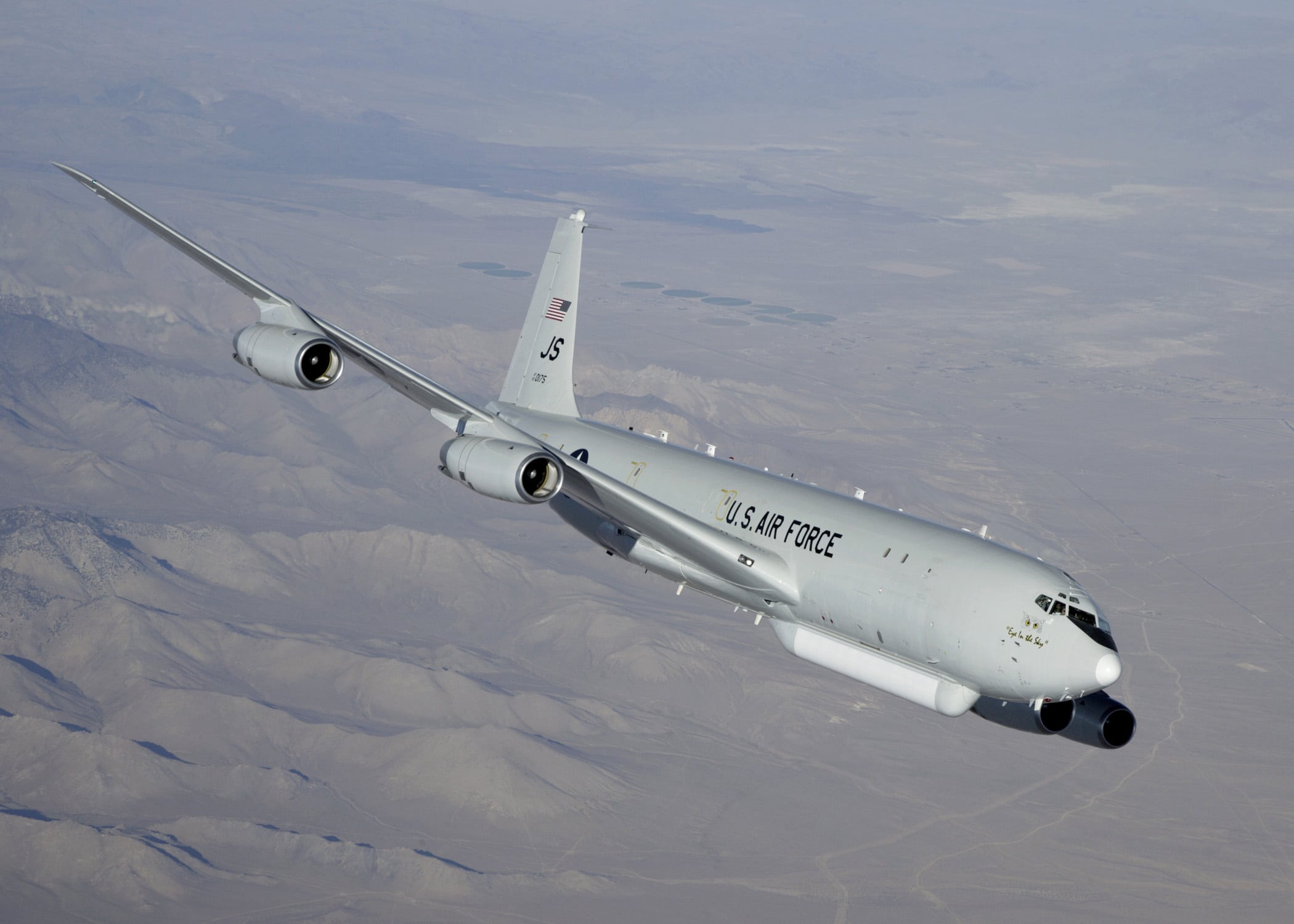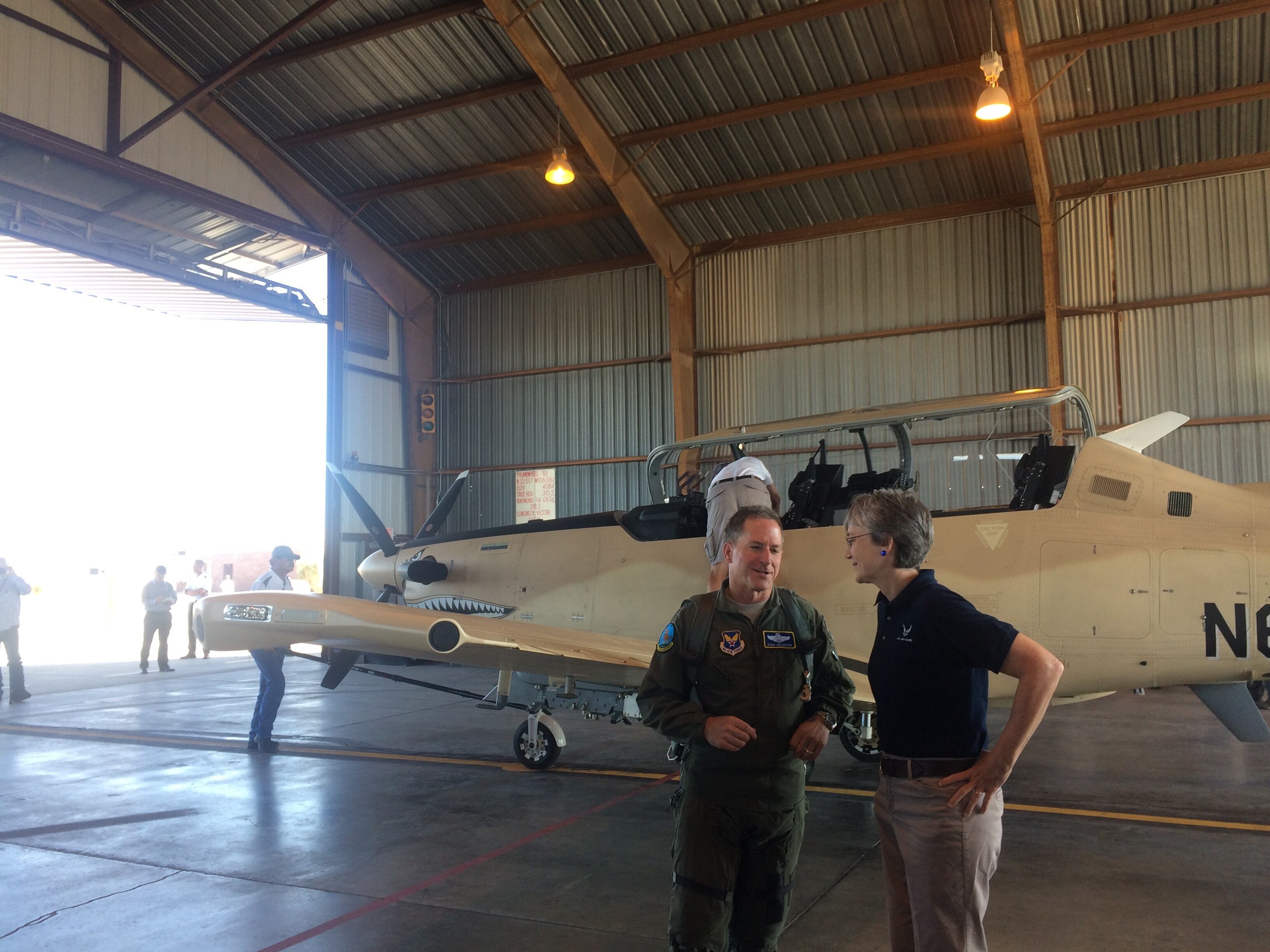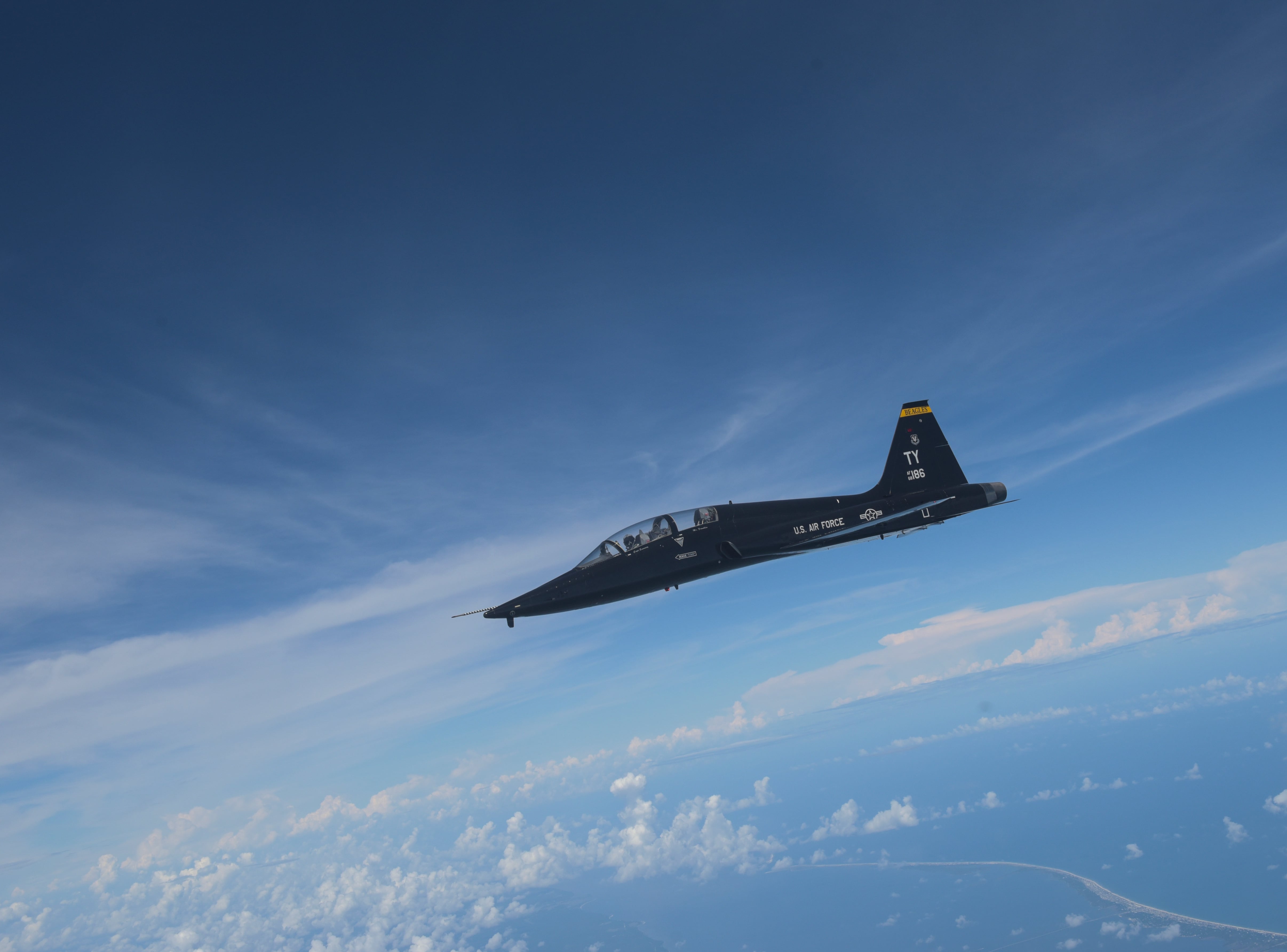WASHINGTON – The Air Force remains undecided on the future of JSTARS and its light attack test, but is confident that its next generation trainer will be awarded early next year – and begin production before the year is through.
Secretary of the Air Force Heather Wilson, alongside Chief of Staff Gen. Dave Goldfein, gave updates on the three programs to reporters during a Nov. 9 briefing.
JSTARS, the service’s battlefield management and control platform, was expected to get a traditional recapitlization, with a new plane selected and equipped with a large radar. Major defense firms have been pushing their designs for several years, laying the groundwork for what could be a lucrative project.
But this fall, the service seemed to dramatically pivot, with Wilson requesting a major review about whether the service can use existing platforms such as legacy aircraft, networked sensors and drones, to complete that mission without a bespoke aircraft.
RELATED

Speaking on Thursday, neither Wilson nor Goldfein offered an update on a report that was supposed to be recently completed about the feasibility of that idea. But reading the tea leaves, the two appear more interested in a broadly networked solution than a traditional JSTARS design.
Wilson noted that the original JSTARS concept came online when she was working at the National Security Council in 1991, and that “technology has changed since then.” The current JSTARS design meets only 5 percent of the requirements for combatant commanders, she said, and offered an assessment that by the time a new JSTARS is up and running, it would meet “less than one percent” of the needs.
Moving away from JSTARS may be difficult, however, with members of Congress having put funding for JSTARS into recently completed National Defense Authorization Act conference, with about $400 million.
In a statement Sen. David Perdue, R-Ga., rapped the Air Force for moving away from the JSTARS recap idea, over concerns that it could put troops in harms way.
“The sharp turn away from the current recap plan conflicts with everything I’ve heard from the Air Force and combatant commanders,” Purdue said. “If the Air Force changes their mind, they’ll need to answer some serious questions about how to meet this need and any gaps we’ll see.”
Goldfein, for his part, argued out that having a single high-end platform could actually make communicating with partners more difficult if they are flying older aircraft. But both vociferously pushed back at the idea that the Air Force is moving away from doing that particular mission, which is vital to coordination for troops on the ground.
“If anyone asked the question to the Secretary and I if we were walking away from supporting our forces on the ground and at the seas…. The answer is ‘absolutely not,’” Goldfein said. “It’s an obligation.”
RELATED

Pivoting to the light-attack experiment known as OA-X, Wilson said the service is still awaiting the results of its flight demonstration between four designs that occurred at Holloman Air Force Base over the summer. The results of that assessment are expected before the end of the year.
Like JSTARS, OA-X received roughly $400 million in the NDAA, and leaders on the Hill have expressed the belief the program should continue past the prototype stage.
There was more concrete news for the service’s trainer aircraft modernization program, known as T-X.
T-X is the Air Force’s biggest ongoing aircraft competition, with about $2 billion at stake over the next five years. The program has been repeatedly delayed, but had been expected to select between three prime contractor offerings from Lockheed Martin, Boeing and Leonardo DRS.
RELATED

However, Air Force Under Secretary Matt Donovan told Defense News in an October interview that he expected the T-X contract award to slip to Spring, probably towards the end of March.
Asked about that time frame, Wilson confirmed they are looking to award the contract early next year, although did not have a specific date on hand. More importantly, the delay in picking a winner for T-X should not delay plans to begin production before the end of fiscal year 2018.
“We expect to start production in FY18, and the decision on the request for proposal is kind of event based, it’s not schedule based,” Wilson said. “We don’t expect an impact on the production timeline. We’ll try to work the acceleration of that when we get the decision.”
Aaron Mehta was deputy editor and senior Pentagon correspondent for Defense News, covering policy, strategy and acquisition at the highest levels of the Defense Department and its international partners.







